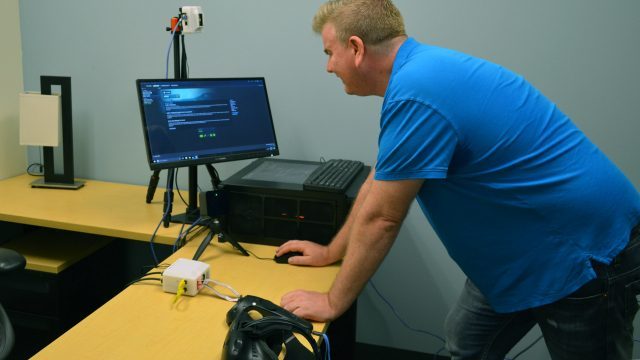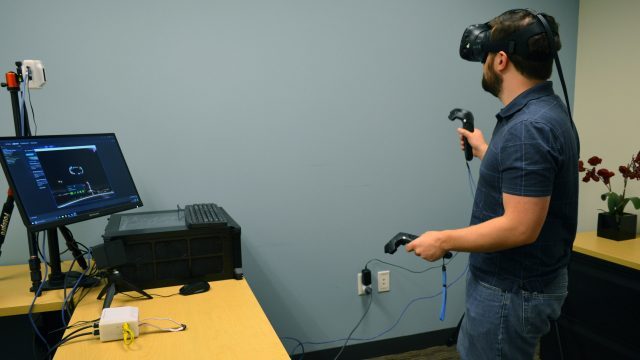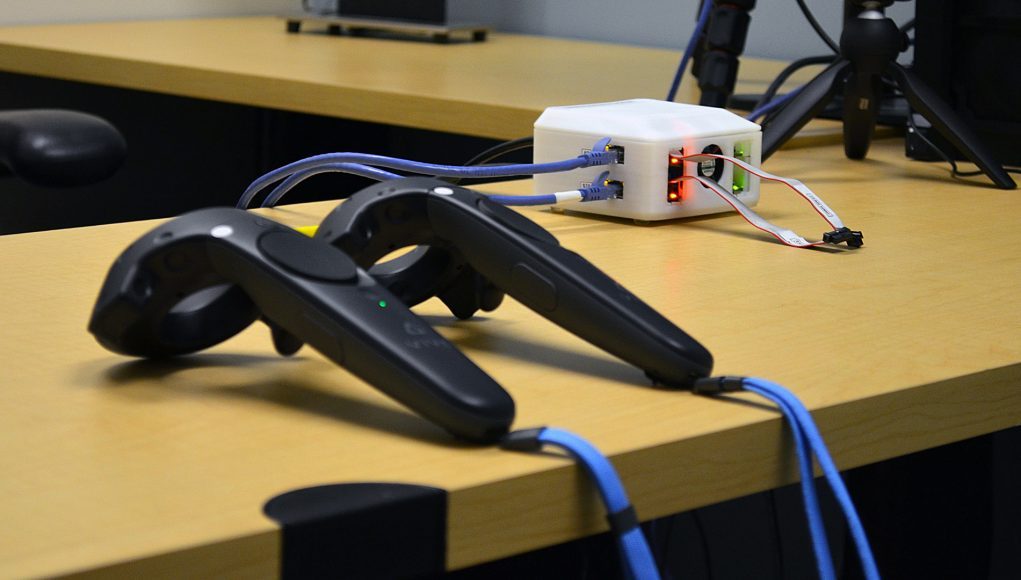IMR is one of several companies creating technology to enable a future where high-end VR headsets can break free of the tether that keeps them connected to the host PC. The company’s secret sauce is their proprietary compression algorithm which they say is made-for-VR, allowing for huge compression at much faster speeds than traditional video compression technology. I recently got to check out the company’s system first-hand during a visit to their Silicon Valley office.
IMR’s Approach to Wireless VR

Of the several companies today working on solutions for making high-end VR headsets wireless, there are a number of different approaches. Some companies are using newer ultra-high bandwidth 60GHz technology in order to pipe over the large quantities of data necessary for today’s VR headsets operating at 90Hz and 2160×1200. Other companies are using existing video compression codecs to compress that data in order to fit it into the bandwidth of wireless technologies that are already out there.
IMR’s strategy is largely the latter, except instead of using an existing compression codec, they have developed a proprietary compression algorithm which they say is optimized for VR, whereas off-the-shelf codecs were designed for the compression of traditional digital video. Why is that important? One example the IMR likes to give is to point to a codec like h.264, which IMR says uses frame-to-frame compression (comparing one frame to the next) which necessitates a minimum 11ms latency given the 90Hz framerate. IMR claims their proprietary compression technology doesn’t use frame-to-frame compression (or sub-pixel sampling) and can achieve 95% compression with encoding and decoding happening in 1ms. The entire end-to-end wireless VR system, including latencies introduced by various hardware interfaces like HDMI is around 2-3ms, the company says.
Achieving 95% compression is a big deal, because, as IMR says, it opens to door to sending the data required for today’s VR headsets over existing wireless technologies like 5GHz 802.11ac and others which can meet similar bandwidth.
So those are the technical tidbits, but how does IMR’s solution perform when put to the test with a VR headset? That’s what I set to find out with a recent visit to the company’s Silicon Valley office.
Hands-on With IMR’s Wireless VR Proof of Concept Module

At IMR’s office I got to see a proof of concept system that demonstrated the company’s core tech running with an HTC Vive (though the system can work the Rift and other headsets as well). At the office I found a little white 3D printed box sitting on a table connected to the Vive. On the side of the box you’ll notice a comically short yellow cable that plugs the box… into itself. That cable actually connects the encoding and decoding hardware together, allowing the compression algorithm to be easily debugged without the need of a wireless link.
To show the systems wireless performance, IMR removes the yellow cable and instead plugs in a wireless transmitter to one end and a receiver to the other, transmitting the same data wirelessly that would have otherwise gone over the short yellow cable. So what you’ll see in the photos is what appears to be a wired HTC Vive, but the data is actually being transmitted wirelessly, just in a way that looks a little different but makes sense for a prototype (and is still capable of demonstrating the principle functionality of the system). [Most of the photos in this article show the yellow cable still plugged in, but this was only during an A/B test to compare the latency between wired and wireless.]
The end-goal of the system is of course is to have one half of what’s in that white box attached directly to the computer and the other half on the headset itself (rather than sitting in the same enclosure), and that’s in development.

With the system running wirelessly, I played a range of familiar games including theBlu, Space Pirate Simulator, and Job Simulator, and as far as latency is concerned, I couldn’t perceive any difference between what I’m used to with a wired HTC Vive. Wired or unwired, I wouldn’t put any money on my ability to guess which was which.
When it comes to visual quality, IMR says the decompressed image is “indiscernible from the original.” I’ll agree that the image quality is very good (especially for the claimed 95% compression), but strictly speaking, not indiscernible. I would be confident in my ability to guess better than chance if I had to do a blind test comparing the original to the decompressed image through the headset; that said, the quality IMR is achieving is easily good enough to make this a viable solution worthy of consideration if you want a wireless VR experience. My feeling is that general users not specifically looking for compression would probably not realize a difference in real world usage.







